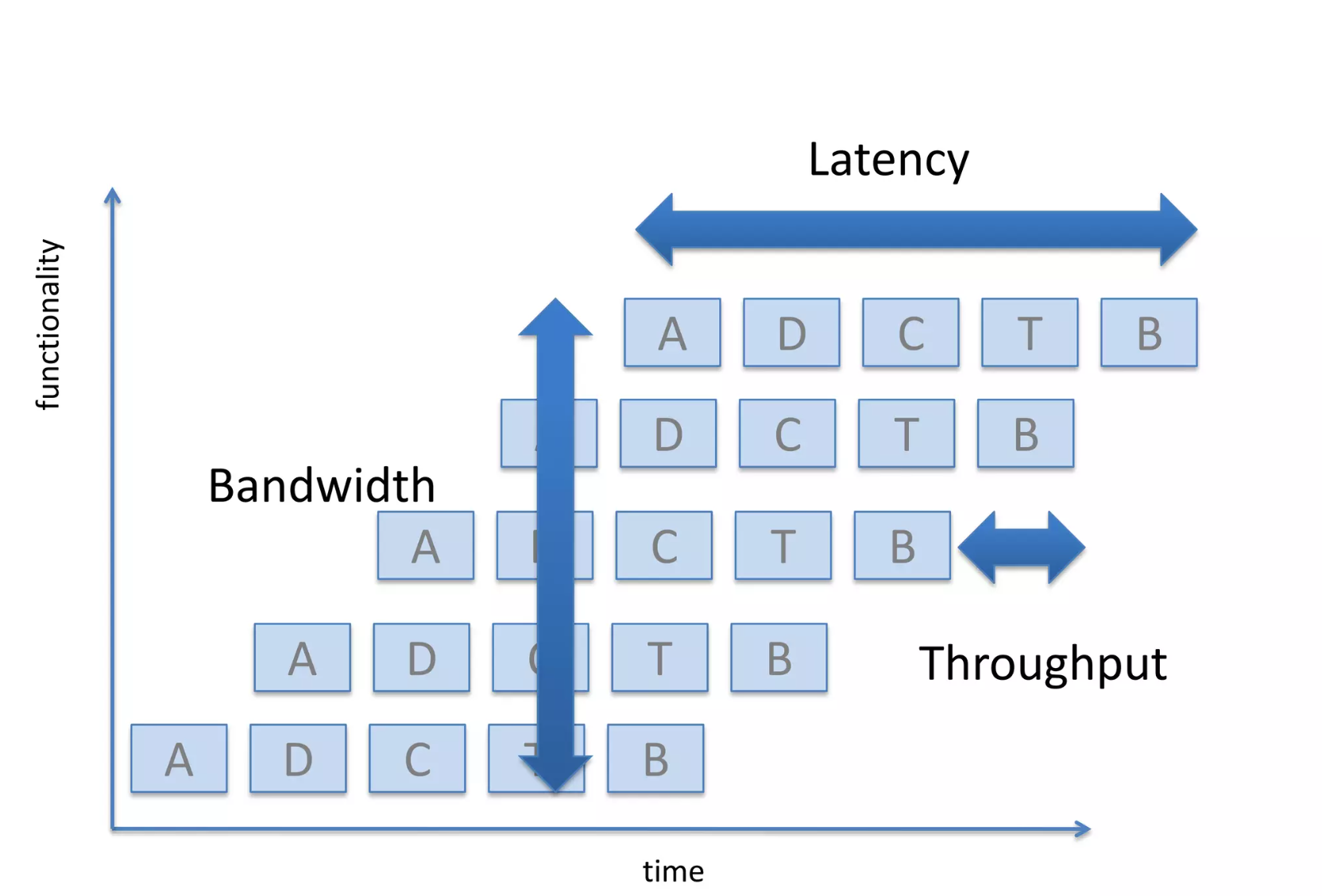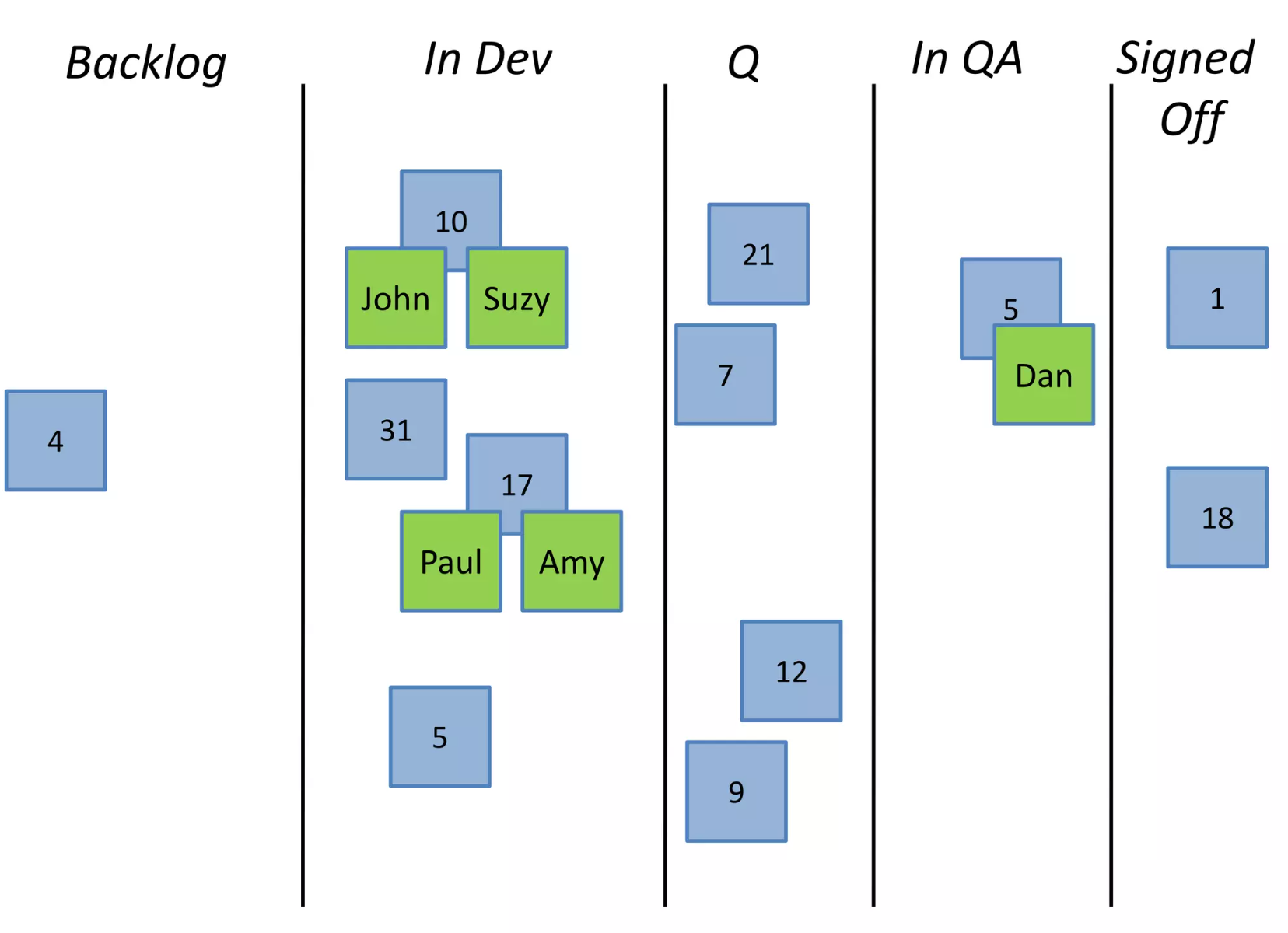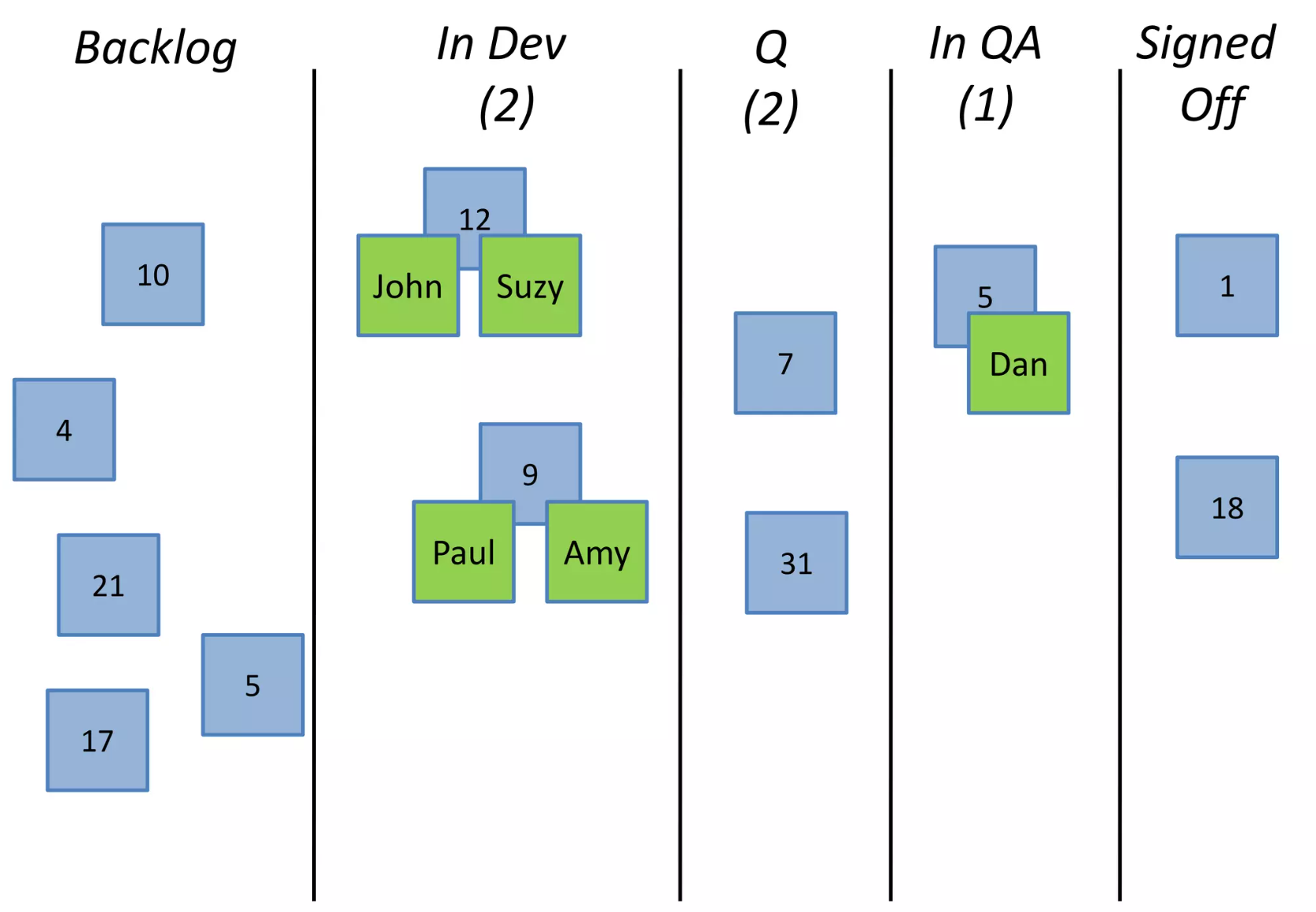Series: Agile Brazil 2010 | Part 6 of 6 > Complete coverage of Brazil’s first national agile methods conference
Reviewing my notes at the end of day two at Agile Brazil 2010, I realized how much complexity can be hidden in something as simple as a board. The talk by Paulo Caroli, titled “Put the Cards on the Wall: Effective Use of the Agile Card Wall”, was a practical lesson in work visualization — a topic I thought I had mastered. Yet I walked away with ten new insights.
Way Beyond Post-its
Until today, my experience with card walls was functional. We used physical or digital boards with the typical columns: “To Do”, “In Progress”, “Done”. It worked… or so I thought. Caroli showed how a board can be a learning tool, not just a tracking tool.
He opened with a powerful visual — a functionality versus time diagram, introducing concepts like throughput, latency, and bandwidth. Each term clicked with context. Throughput? How much we deliver per unit of time. Latency? How long it takes for a feature to be delivered. Bandwidth? How many tasks the team can handle simultaneously without drowning.

This image hit hard. I had never thought about card walls as a tool to reflect on bandwidth. How much can we handle without compromising flow? With this framing, everything started to make sense.
Visual Limits: Way Beyond WIP
Next, Caroli discussed visual limits. He presented two seemingly similar boards, but with subtle — and powerful — differences. The first used explicit WIP (Work In Progress) limits. The second ignored them.


The hidden chaos of “just one more task” became clear. When everyone is overloaded, flow disappears. Visual limits help trigger team decisions: pause, help, reorganize.
Caroli emphasized that a good card wall is self-explanatory. Even a visitor should be able to understand the team’s current state at a glance. And this isn’t about tools — it’s about design.
Layers of Information
Another powerful takeaway was the design of a single task card. Caroli added visual elements incrementally: assignee, priority, impediments, status, developer photo, even notes.

The card became a powerful communication artifact. A dot for story points, a yellow tag for “on hold”, a photo for human context. The result? Fewer meetings, fewer questions, less friction.
10 Concepts, 10 Actions
Here are 10 concepts from Caroli’s talk, each one ready to be put into practice:
- To visualize is to align – The board aligns perception and reality.
- Throughput ≠ tasks started – Only what is done counts.
- WIP limits are safety rails – They prevent overload and noise.
- Latency matters – Sometimes we deliver less because too much is idle.
- Bandwidth ≠ speed – Doing more at once doesn’t mean doing it faster.
- Cards tell stories – Each card should say more than just the title.
- Make blockers visible – Impediments should stand out.
- Standardize without rigidity – Card design helps, but must stay flexible.
- Boards evolve with the team – They should grow with practices.
- Shared visibility means shared ownership – The card wall belongs to the team, not just the PO or Scrum Master.
Wrapping Up the Day with Clarity
At the end, I looked back at our team’s current board and already saw five ways to improve it. Caroli’s talk helped me notice what our board wasn’t saying — and how much that slowed decisions, collaboration, and delivery.
Thank you, Paulo Caroli, for showing us that putting cards on the wall is about more than transparency. It’s about clarity, flow, and continuous improvement — with color, context, and care.
Agile Brazil 2010 Series Navigation:
- Part 1: Hands-on XP Workshop
- Part 2: Story Mapping with David Hussman
- Part 3: My First Agile Talk
- Part 4: Retrospectives with Hugo Corbucci and Mariana Bravo
- Part 5: Guerrilla Coaching with Francisco Trindade
- Current: Part 6 - Put the Cards on the Wall with Paulo Caroli (Final)
This series documents my participation in Agile Brazil 2010, Brazil’s first national agile methods conference. From hands-on XP to effective card walls, it was a transformative event that shaped my understanding of agile practices and visual management.